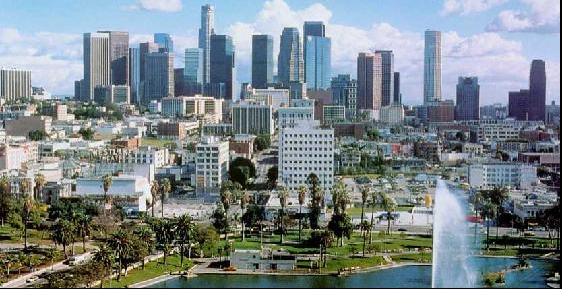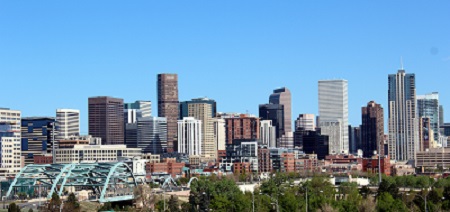January 9th, 2023
 New York City’s Central Business District is the largest of its kind in the United States and is one of the world’s most prosperous and resilient business hubs. Although there are several designated business districts in New York, the city’s primary Central Business District (CBD) refers to the area consisting of Midtown and Downtown Manhattan. This area has been an influential economic and financial center since the 19th century, mainly thanks to the presence of the New York Stock Exchange and other important financial institutions.
New York City’s Central Business District is the largest of its kind in the United States and is one of the world’s most prosperous and resilient business hubs. Although there are several designated business districts in New York, the city’s primary Central Business District (CBD) refers to the area consisting of Midtown and Downtown Manhattan. This area has been an influential economic and financial center since the 19th century, mainly thanks to the presence of the New York Stock Exchange and other important financial institutions.
Key Facts & Figures
The CBD consists of three sub-districts: Midtown, Midtown South, and Downtown, which are further divided into 18 submarkets. 2022 data from the NY State Comptroller shows that the city is home to more than 250,000 registered businesses, including 43 S&P 500 corporations.
The CBD has more than 617,000 residents and local companies provide employment to 1.5 million people.
NYC attracts more than 30 million visitors per year, including leisure and business travelers. Visitor numbers are projected to exceed 70 million by 2025.
Read the rest of this entry »
Tags: Business Start Ups, CBD's, Central Business Districts, Manhattan, new york
Posted in Best Cities for Business in the USA, Business Districts, Business Spotlights, Business Start Ups, CBD's, Manhattan, New York | No Comments »
Add to: Del.icio.us | Digg
January 5th, 2021
 There are several types of office space in the USA. These properties are classified according to their quality standards and amenities, using the classification system developed by the Building Owners and Managers Association. This system establishes three main types of office space: Class A, Class B, and Class C. Here are the defining features of each Class:
There are several types of office space in the USA. These properties are classified according to their quality standards and amenities, using the classification system developed by the Building Owners and Managers Association. This system establishes three main types of office space: Class A, Class B, and Class C. Here are the defining features of each Class:
Class A Office Space
These properties are characterized as having the highest quality standards, amenities, and fixtures. Common features include top-tier HVAC and lighting systems, the latest telecommunications infrastructure, and often have unique design or architectural traits. Because of their high standards, Class A offices are typically (but not always) in new or trophy buildings with high-quality road and mass transit connections. Location also plays a role in Class A offices, as they are often located in sought-after areas such as Capitol Hill, Downtown Los Angeles, and The Loop in Chicago.
Class B Office Space
Class B properties are a middle-of-the-road option for office-based businesses. They are a step below Class A properties in terms of design, systems, and infrastructure, but they are still functional spaces that can accommodate a wide range of office operations. Depending on their location and potential, some Class B buildings are acquired by property management or investment firms and refurbished to Class A standards. Many of these offices are located in buildings that are between 10 and 20 years old.
Class C Office Space
Class C offices are typically located in older buildings (20 years+) outside of the CBD or other highly sought-after business areas. These properties may have outdated infrastructure, fixtures, and amenities, with some requiring partial renovation.
Read the rest of this entry »
Tags: Business Advice, Business Start Ups, Class A, Class B, Class C, Classification, office space options, Office-tips
Posted in Business Advice, Business Start Ups, Company Relocation, Office Talk | No Comments »
Add to: Del.icio.us | Digg
July 27th, 2017
 The following is the sixth in our series focusing on providing information on the various types of office space available, from business parks to hot desking and project space, business incubators, conventional office accommodation to virtual office space options, managed offices to shared co-working options.
The following is the sixth in our series focusing on providing information on the various types of office space available, from business parks to hot desking and project space, business incubators, conventional office accommodation to virtual office space options, managed offices to shared co-working options.
Typically located in business districts of larger cities, serviced offices are becoming more of a standard and less of a trend for today’s small business owner. And why not? Renting a serviced office space cuts down on a number of issues and costs associated with having an office. Most importantly, rental of a serviced office space provides an immediate solution to the office space problem.
The Whole Package
Serviced offices are ready to go as soon as you sign the agreement. There is very little delay between deciding to open an office and actually having an office ready for business.
Serviced offices are usually rented on a month to month basis, as opposed to the long term three to five year commitment of a traditional office space lease. The monthly rent may appear to be slightly higher than the traditional lease price, but the whole package aspect of serviced offices makes them a better deal. New businesses, start-ups, and small businesses may neglect to calculate the additional costs of furnishings, equipment, and staff when they consider opening an office. The whole package concept eliminates the worry of those forgotten expenses.
Rental costs frequently include the costs of:
Furnishings
Businesses can begin straight to work on the first day without any delays waiting for deliveries of desks, lamps, bookshelves, or chairs. A serviced office includes all of these. In addition, conference rooms, kitchens, meeting spaces, and other shared amenities are available as needed. Conference rooms, for example, can be rented by the hour as an addendum to your office space lease. Read the rest of this entry »
Tags: Office Space, Serviced Office Space
Posted in Business Start Ups, Office Organization, Office Space Options Series | No Comments »
Add to: Del.icio.us | Digg
June 24th, 2017
 The following is the fifth in our series focusing on providing information on the various types of office space available, from business parks to hot desking and project space, business incubators, conventional office accommodation, managed offices to shared co-working options.
The following is the fifth in our series focusing on providing information on the various types of office space available, from business parks to hot desking and project space, business incubators, conventional office accommodation, managed offices to shared co-working options.
For a business in need a prestigious office address and presence without an office lease, virtual office options are a great solution.
What is a Virtual Office?
A virtual office is a most effective solution to the dilemma faced by small businesses and entrepreneurs. Virtual offices provide an address, usually in a recognized business district, and other amenities that allow users to maintain a professional image without having to maintain a high cost conventional office space.
Why have a Virtual Office?
A virtual office allows work from home entrepreneurs more economic efficiency. Having a virtual office helps retain the image of a traditional business, with a professional office address, without the expense of renting an office in the business district. Virtual office users have the benefit of being able to flexibly match expenses with incomes increasing or decreasing the services as their revenue fluctuates.
Virtual offices can help reduce overhead while maintaining a high level of professionalism. They provide you with both communication services and physical space services, based on your need and determined by you.
What is included?
Generally, a virtual provider offers a business address and mail handling services, at the least. At the most, programs will include physical offices, dedicated phone lines with receptionist service, and meeting spaces. Virtual office services offer a variety of packages that include some or all of these amenities. Some services allow you to customize a package to suit your particular needs. Read the rest of this entry »
Tags: Office Organization, Office Space, office space options, Virtual Office Services
Posted in Business Start Ups, Office Organization, Office Space Options Series, Virtual Offices | No Comments »
Add to: Del.icio.us | Digg
May 29th, 2017
 The following is the fourth in our series focusing on providing information on the various types of office space available, from business parks to hot desking and project space, business incubators, conventional office accommodation to shared co-working options.
The following is the fourth in our series focusing on providing information on the various types of office space available, from business parks to hot desking and project space, business incubators, conventional office accommodation to shared co-working options.
For a personalized office without purchasing an office building or committing to a long term lease, consider a Managed Office Space.
Perhaps you’ve seen those signs in the business district Leasing: will build to suit. Those signs are symbolic of the benefits of a managed office space. Managed offices are not cookie-cutter offices. A managed office space can be built to suit, can be designed to meet the specific needs of your business.
Aren’t Managed Offices the same as Serviced Offices?
Like serviced offices, managed offices are typically rented fully furnished and equipped for immediate occupation. Also like a serviced office, a managed office space is rented on pay as you go type flexible terms. Unlike a serviced office, managed offices are usually not located in the uptown glass tower high rise office structure. They are generally located in smaller buildings and in buildings with more personality.
There are two key differences between a serviced office and a managed office: location and branding and clerical services.
Branding
Managed offices are not attached to the brand of the office building they are open to your own branding. A managed office is tailored to your specifications, with your branding and your workspace requirements. Frequently managed office providers will handling the entire office set-up for you. Some of the processes handled by the provider are decorating and design requirements; tailoring the space to your needs; procuring of furniture, IT, communications systems; managing the IT and communications maintenance; and, if needed, locating the ideal building and negotiating the lease for the space. Ideally, the managed office provider finds and creates for you the exact vision you have for your business. Read the rest of this entry »
Tags: Managed office space, office options, Office Space
Posted in Business Advice, Business Start Ups, Office Space Options Series | No Comments »
Add to: Del.icio.us | Digg
March 28th, 2017
 In line with global trends, demand for creative space is also on the rise in Texas’ largest city. Houston’s creative sector has been described as a ‘sleeping giant’ due to its enormous potential to become one of the leading sources of income and employment in the Lone Star state. Currently, over 113,000 Houston companies are involved in this sector, which generates $25b in sales and employs nearly 180,000 people across the state.
In line with global trends, demand for creative space is also on the rise in Texas’ largest city. Houston’s creative sector has been described as a ‘sleeping giant’ due to its enormous potential to become one of the leading sources of income and employment in the Lone Star state. Currently, over 113,000 Houston companies are involved in this sector, which generates $25b in sales and employs nearly 180,000 people across the state.
In view of these figures, it is hardly surprising to see that companies in virtually every business sector are considering adding creative space to their business accommodation offerings. This is the case despite the dominance of the energy and engineering sectors, which typically are not as innovative as others, although they are beginning to understand the value of creative workspace and to realize that conventional office space presents some obstacles to innovation and creativity.
Below are some examples that showcase the most inspiring creative office spaces in Houston.
GreenStreet is a 570,000-square feet mixed-use commercial development that is home to several units that offer collaborative space in one of the city’s top locations. Creative space ranges from small floor plates to large work areas of up to 37,000 square feet, all of which are designed and furnished to facilitate collaboration and innovation. Units feature open plan space, private and shared offices, training and meeting rooms, kitchen, and dedicated break and wellness areas.
There is a great deal of creative space springing in Houston’s Midtown and Uptown, although over the past 5 years warehouse-to-office conversions have also become common along Washington Avenue, Montrose, and east of downtown. In Midtown, Wi+CoWork offers shared space to the local creative community on a membership basis. Office space at Wi+CoWork includes access to conference rooms, community events, and office support services. Read the rest of this entry »
Tags: Creative Workspace, Houston, Office Space, Texas
Posted in Best Cities for Business in the USA, Business Start Ups | No Comments »
Add to: Del.icio.us | Digg
February 24th, 2017
 The following is the second in our series focusing on providing information on the various types of office space available, from business parks to hot desking, conventional office accommodation to shared coworking options.
The following is the second in our series focusing on providing information on the various types of office space available, from business parks to hot desking, conventional office accommodation to shared coworking options.
What is a startup?
Before discussing the qualities of a startup space or incubator, it is worth determining exactly what a startup is.
Theoretically, any new business whose market is not defined by location could be considered a startup. (For example, a newly opened restaurant is indeed a small business, but, because the market is location based, it is not a startup.)
In terms of use in today’s economy, a startup is a small business, usually technology oriented; startups generally provide service to a worldwide market. Tech startups are not confined by location or operating hours only by how many consumers or clients they can reach.
Incubators
In the non business world, an incubator is a warm safe place for a baby or a baby chick to get a nice healthy start to life. In the business world, an incubator is much the same. Incubators provide services that help startups get through those trials faced by new businesses.
Services
Some of the services provided by incubators are:
- Legal: things like proprietary guidelines, creating bylaws or business plans, and navigating the regulations of your industry.
- Business management: basic accounting services, business organization tips, company setup, and help with building and framing the identity of your startup.
- Marketing: market research and networking.
- Funding: access to angel investors or venture capitalists and help in locating other sources of funding for your startup.
- Networking: introduction to others in your industry, networking with mentors, investors, and industry specialists.
- Site services: an office or team workspace, access to high-speed internet, copying and faxing, and other clerical or administrative services. Read the rest of this entry »
Tags: business incubators, Office Rental, office space options, startups, USA
Posted in Business Advice, Business Start Ups, Office Space Options Series | No Comments »
Add to: Del.icio.us | Digg
November 23rd, 2016
 Los Angeles CBD is a thriving commercial hub comprised of 15 districts: Skid Row, Civic Center, Little Tokyo, Old Bank, South Park, Historic Core, Gallery Row, Fashion District, Arts District, Warehouse District, Jewelry District, Industrial District, and Toy District. Bunker Hill and the Financial District are also part of downtown Los Angeles and are considered the city’s business core area.
Los Angeles CBD is a thriving commercial hub comprised of 15 districts: Skid Row, Civic Center, Little Tokyo, Old Bank, South Park, Historic Core, Gallery Row, Fashion District, Arts District, Warehouse District, Jewelry District, Industrial District, and Toy District. Bunker Hill and the Financial District are also part of downtown Los Angeles and are considered the city’s business core area.
Los Angeles’ CBD was first defined as a business district in 1920, and was expanded and redeveloped during the 1950s and 1960s, when several high-rise office buildings were added to the city’s urban landscape. Downtown LA is easily accessible by road and mass transit, as the area lies at the intersection between the I-10, I-5 and I-110 roads, and is served by 4 Metro lines. Union Station is located on the northern edge of the CBD, and Los Angeles International airport is only 19 miles away from the downtown area.
Unlike other US business districts, downtown LA has a large (and growing) permanent population. In 2016, more than 50,000 people lived within a 2-mile radius of the CBD, and particularly in the eastern fringe, where many office buildings have been converted into residential units. Read the rest of this entry »
Tags: Business, California, CBD, CBD's, Los Angeles
Posted in Best Cities for Business in the USA, Business Districts, Business Spotlights, Business Start Ups, CBD's | No Comments »
Add to: Del.icio.us | Digg
November 12th, 2015
Entrepreneurs and new businesses in the south are encouraged to relocate to Georgia and North Carolina, as Greensboro, Augusta and Columbus feature in a recent article from USA Today which highlights the best cities for new start ups. The article discusses the best and worst cities for new business start ups and you may be surprised to learn that New York and Los Angeles may not be the best locations for budding entrepreneurs. Dollars may be floating around some of the multinationals and Silicon Valley corporations but many new businesses struggle to make a name and income in these locations, while quality of lifestyle is also a major consideration.
Reasons Augusta, Columbus and Greensboro are the Best Cities to Start a Business in the South USA
You’ll find multinationals, major hospitals, world leading research institutes, universities and hosts of SMEs situated in Augusta, Columbus and Greensboro, with plentiful opportunities for any new business and less expensive office/retail locations than cities like New York or LA. Local chambers of commerce provide generous support and networks for added support once your business is operational.
Greensboro
Starting up in Greensboro allows you to pull in customers from the surrounding areas of Kernersville, Summerfield and High Point, while the thriving city population totals almost 300,000. The local Chamber of Commerce runs free seminars from the Center at Guilford Technical College, with added courses, workshops and seminars at a variety of locations, including the Nussbaum Center and the Con. Ed. Center. You can source advice and information from the Chamber, and the structured workshops give any budding entrepreneur all the advice and information required to start up a successful company.
Augusta
Augusta has one of the largest medical conurbations in the States and is also home to the Dept. of Energy nuclear facility based on the Savannah River. A number of multinationals are located in the neighborhood, while near by Fort Gordon is home to the Army Signals. Census figures show the 2012 Augusta population to be around 200,000. The Downtown Development Authority 2008 guide to starting up a new business is available for free download, while StartUp Augusta is a LinkedIn mentoring service offering support to local business startups via its online community. Read the rest of this entry »
Posted in Best Cities for Business in the USA, Business Advice, Business Spotlights, Business Start Ups | No Comments »
Add to: Del.icio.us | Digg
May 25th, 2015
 Overview of Business in Denver
Overview of Business in Denver
Over the past few years, Colorado’s capital city has been making great progress in diversifying its economic base, attracting an increasing number of new businesses in a variety of industries. As a result, Denver is currently considered one of the key commercial real estate markets to watch. A survey published by the Denver Business Journal in 2014 revealed that more than half of the interviewees gave a good rating to the city’s office and retail property market, classifying them as definite ‘buys’. The same report cites industrial diversity as one of the most attractive features of the local economy and as the principal driver of business in the city. These factors have positioned Denver as one of the best US cities for small-sized businesses, as the city ranks as high as New York and Miami in terms of business per capita, industry variety, and net growth.
Major Industries and Key Economic Drivers in Denver
Since the 1990s, new technologies have been driving growth in the local economy. High-tech companies are mainly clustered around the business parks located to the northwest of the city centre, such as the Westmoor Technology Park, Centennial Valley, and the Interlocken Advanced Technology Park. According to Forbes, over the past five years industry sectors like renewable energy, telecommunications, and aerospace have grown in importance and now constitute key economic drivers for the local economy. Read the rest of this entry »
Tags: Colorado, Denver
Posted in Business Advice, Business Spotlights, Business Start Ups | No Comments »
Add to: Del.icio.us | Digg
 New York City’s Central Business District is the largest of its kind in the United States and is one of the world’s most prosperous and resilient business hubs. Although there are several designated business districts in New York, the city’s primary Central Business District (CBD) refers to the area consisting of Midtown and Downtown Manhattan. This area has been an influential economic and financial center since the 19th century, mainly thanks to the presence of the New York Stock Exchange and other important financial institutions.
New York City’s Central Business District is the largest of its kind in the United States and is one of the world’s most prosperous and resilient business hubs. Although there are several designated business districts in New York, the city’s primary Central Business District (CBD) refers to the area consisting of Midtown and Downtown Manhattan. This area has been an influential economic and financial center since the 19th century, mainly thanks to the presence of the New York Stock Exchange and other important financial institutions. There are several types of office space in the USA. These properties are classified according to their quality standards and amenities, using the classification system developed by the
There are several types of office space in the USA. These properties are classified according to their quality standards and amenities, using the classification system developed by the  The following is the sixth in our series focusing on providing information on the various types of office space available, from
The following is the sixth in our series focusing on providing information on the various types of office space available, from  The following is the fourth in our series focusing on providing information on the various types of office space available, from
The following is the fourth in our series focusing on providing information on the various types of office space available, from  In line with global trends, demand for creative space is also on the rise in Texas’ largest city. Houston’s creative sector has been described as a ‘sleeping giant’ due to its enormous potential to become one of the leading sources of income and employment in the Lone Star state. Currently, over 113,000 Houston companies are involved in this sector, which generates $25b in sales and employs nearly 180,000 people across the state.
In line with global trends, demand for creative space is also on the rise in Texas’ largest city. Houston’s creative sector has been described as a ‘sleeping giant’ due to its enormous potential to become one of the leading sources of income and employment in the Lone Star state. Currently, over 113,000 Houston companies are involved in this sector, which generates $25b in sales and employs nearly 180,000 people across the state.
 Los Angeles CBD is a thriving commercial hub comprised of 15 districts: Skid Row, Civic Center, Little Tokyo, Old Bank, South Park, Historic Core, Gallery Row, Fashion District, Arts District, Warehouse District, Jewelry District, Industrial District, and Toy District. Bunker Hill and the Financial District are also part of downtown Los Angeles and are considered the city’s business core area.
Los Angeles CBD is a thriving commercial hub comprised of 15 districts: Skid Row, Civic Center, Little Tokyo, Old Bank, South Park, Historic Core, Gallery Row, Fashion District, Arts District, Warehouse District, Jewelry District, Industrial District, and Toy District. Bunker Hill and the Financial District are also part of downtown Los Angeles and are considered the city’s business core area.